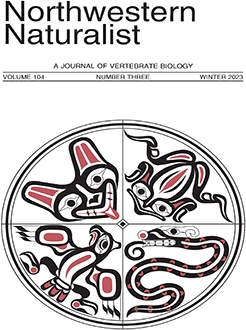The American Avocet (Recurvirostra americana) is a striking black-and-white shorebird that occurs seasonally in southern Canada from British Columbia to western Ontario. Its northern limit in Alberta is near the latitude of Edmonton, and its typical preferred habitat is lakes similar to Beaverhills Lake, a Ramsar wetland 60 km east of Edmonton. In 2009, after 45 y of field studies of shorebirds and their avian predators at Beaverhills Lake, I switched study locations to Cooking Lake. From 2009 to 2023, I walked a seasonal bird survey along a 3–5-km section of Cooking Lake shores. The spring arrival of Avocets coincided with the first open water, and they stayed at the lake until late October, 3–4 wk after the latest date recorded in provincial handbooks. Avocet reproduction at Cooking Lake was presumed to be limited by the scarcity of island nesting habitat. Non-nesting aggregations were estimated at a maximum of 6000 birds. Foraging and roosting flocks were monitored for interactions with raptors, but in 60 y of walking the shores of both Alberta lakes, I have never seen an avian raptor seize an Avocet, nor did I find any plucked remains of Avocets.
How to translate text using browser tools
11 December 2023
AMERICAN AVOCETS AT COOKING LAKE, ALBERTA, 2009–2023, WITH SPECIAL REFERENCE TO LARGE AGGREGATION SIZE, LOW REPRODUCTION RATE, LATE MIGRATION DEPARTURE, AND EFFECTIVE PREDATOR AVOIDANCE
Dick Dekker
ACCESS THE FULL ARTICLE

Northwestern Naturalist
Vol. 104 • No. 3
Winter 2023
Vol. 104 • No. 3
Winter 2023
American avocet
low reproduction
non-nesting aggregations
predator avoidance
Recurvirostra americana




